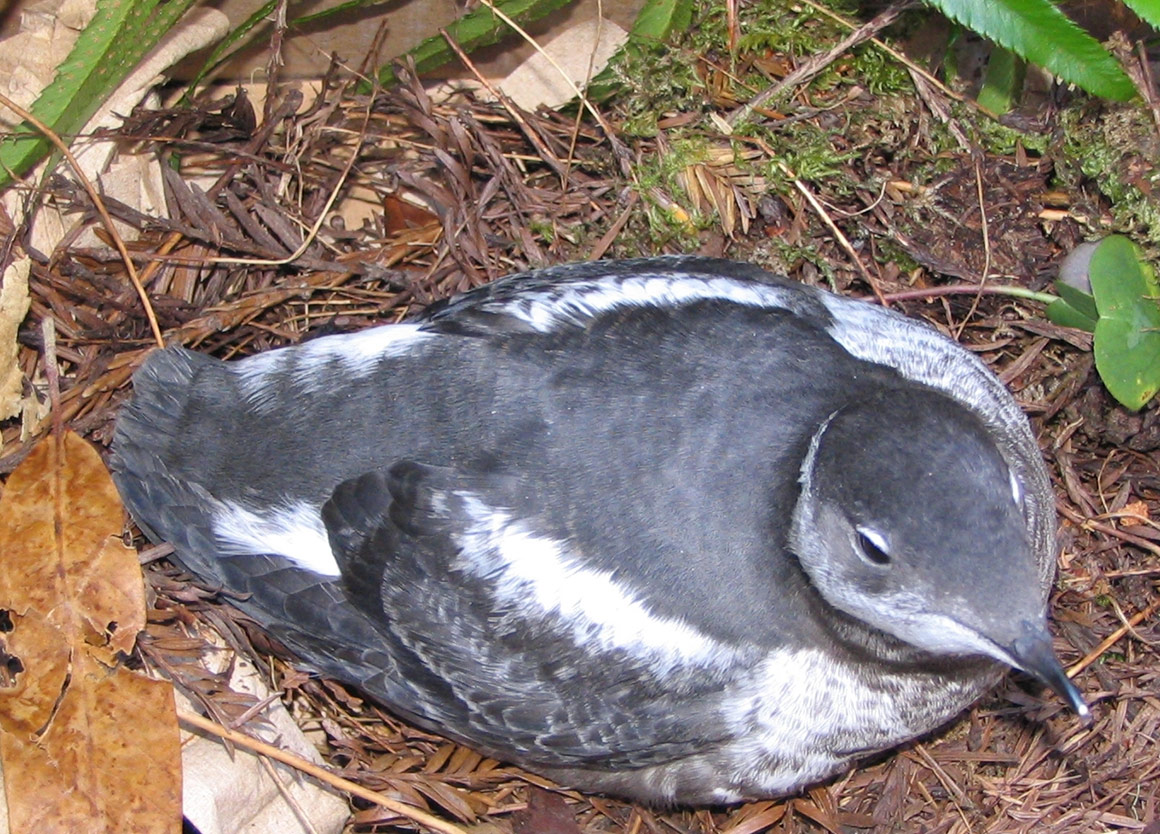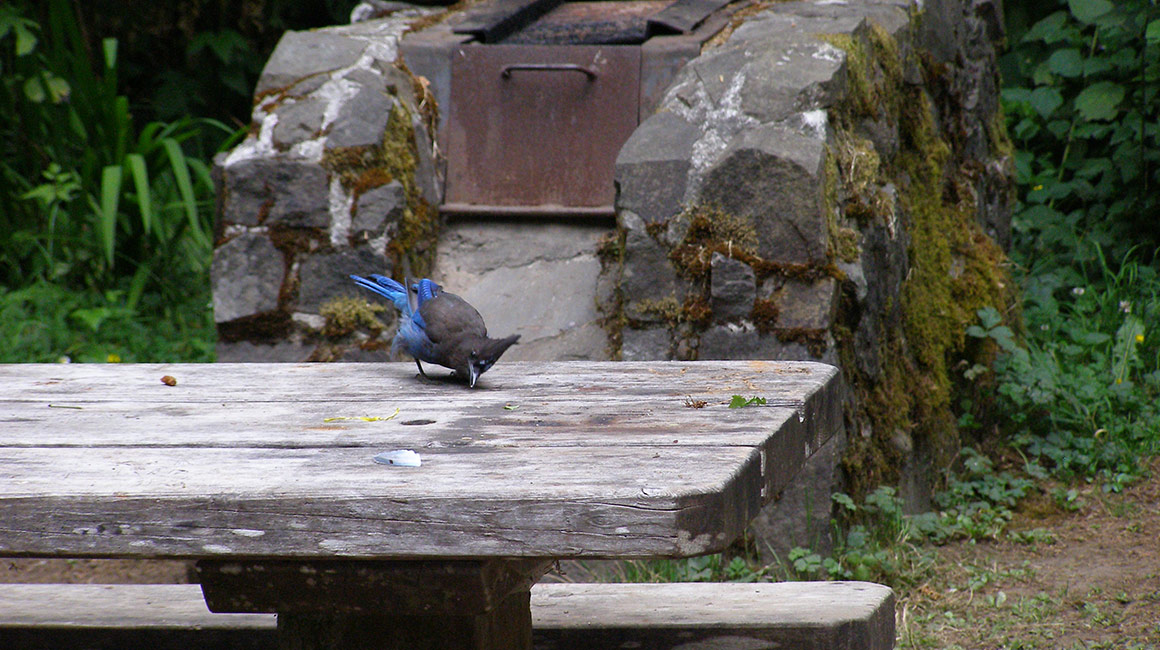
Communication campaign sign.
Threatened Marbled Murrelet (an old growth forest nesting seabird) nests are preyed upon by Steller’s Jays. Further, Steller’s Jays are attracted to Redwoods National and State Parks (RNSP) campgrounds in Marbled Murrelet breeding habitat due to an abundance of human food that park visitors inadvertently leave at campsites. This supplemental food resulted in unnaturally high levels of murrelet nest predation.
Biological monitoring of Steller’s Jay density for four years at park campgrounds within Marbled Murrelet breeding habitat indicated that an ongoing visitor education campaign was ineffective.
To help reduce food waste in campground and thus reduce jay numbers, RNSP staff from the National Park Service and California Department of Parks and Recreation worked with social science researchers at Humboldt State University to conduct a large scale communication study. This study examined the current education program language, human perceptions of the education program, and human behaviors at campsites.

Juvenile Marbled Murrelet. Photo courtesy of National Park Service.
Research Insights
- This research helped identify why and how the current education program was ineffective, and
- Provided clear guidance on how to improve messaging for increased behavior change to decrease the amount of food left at campsites. More specifically this research provided ideas for new language, imagery, message placement, and communication techniques.
Outcomes
Six years of further Steller’s Jay monitoring after the new education program was implemented indicates a positive trend in reducing the density of jays in park campgrounds within Marbled Murrelet breeding habitat by up to 50%.

Steller’s Jay at Picnic Table. Photo courtesy of National Park Service.
Learn more about this study from the project report or contact Keith Bensen: keith_bensen@nps.gov.

